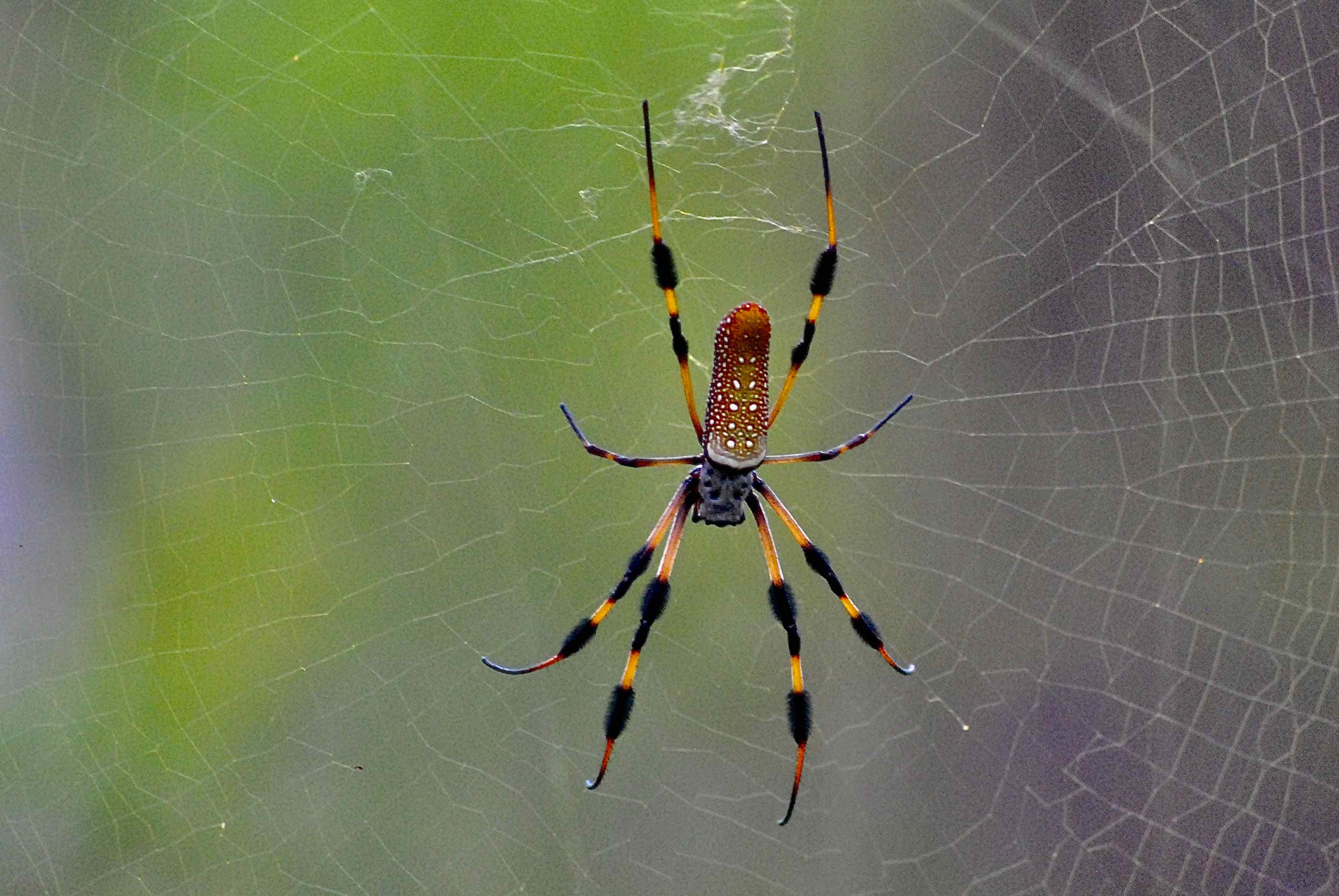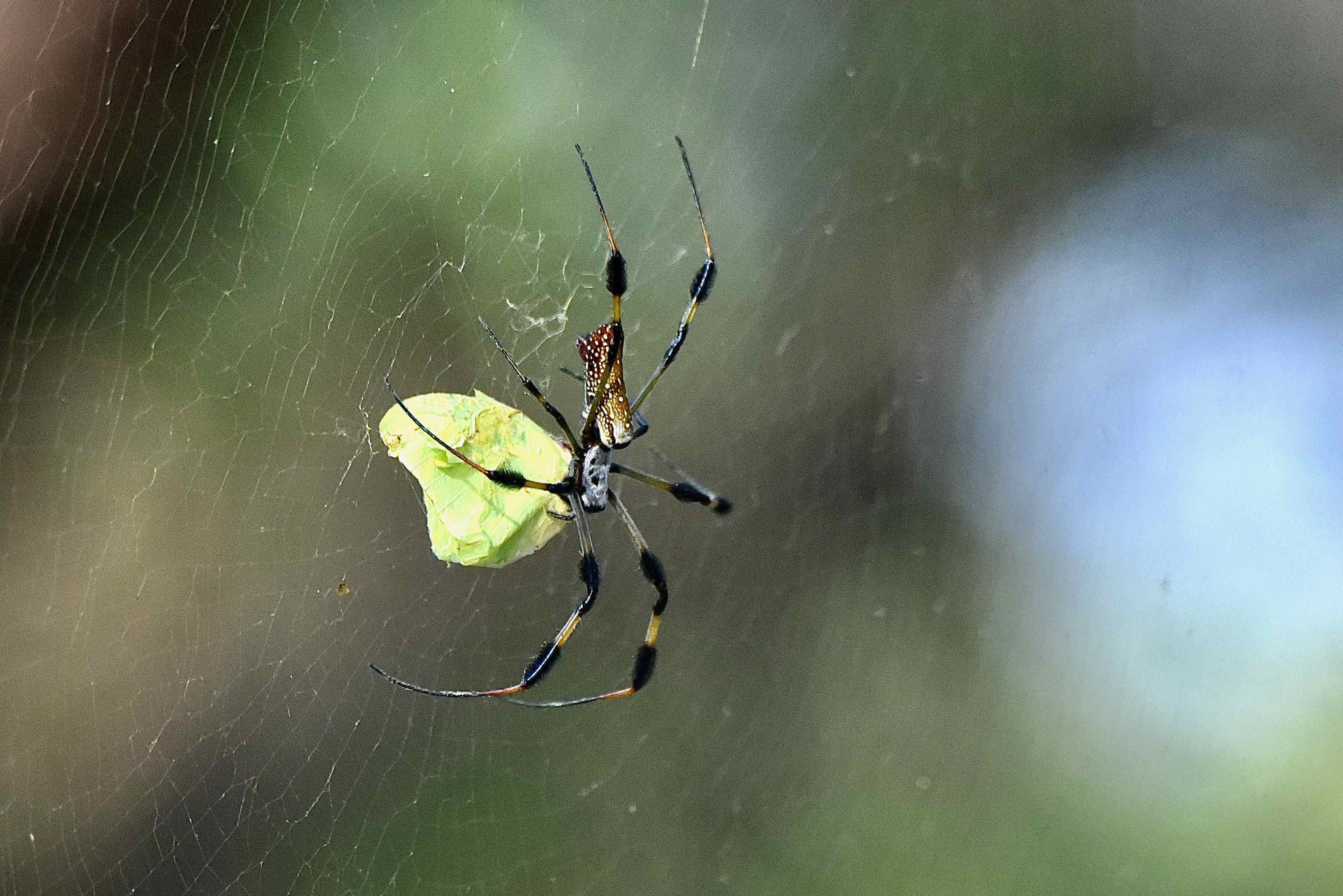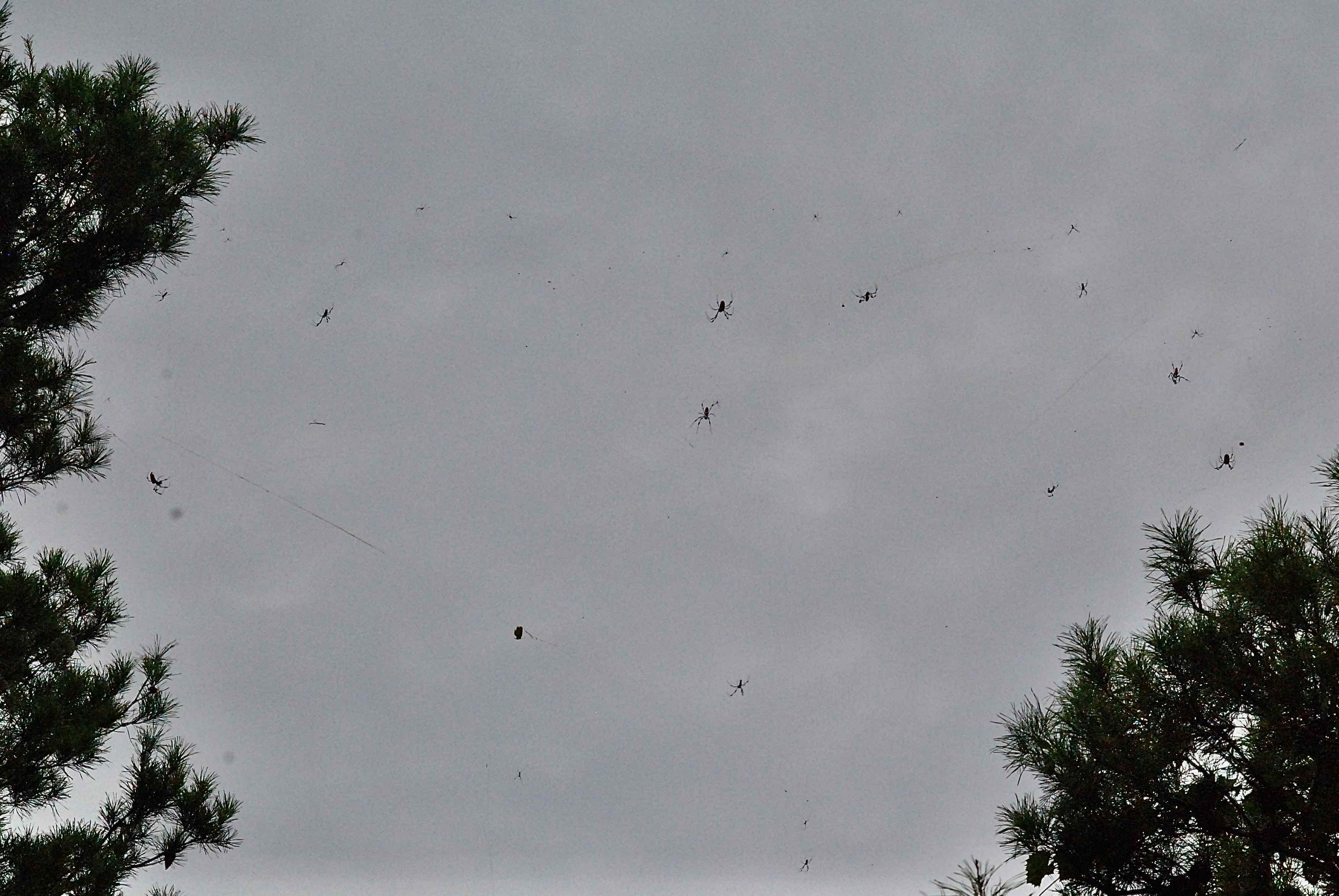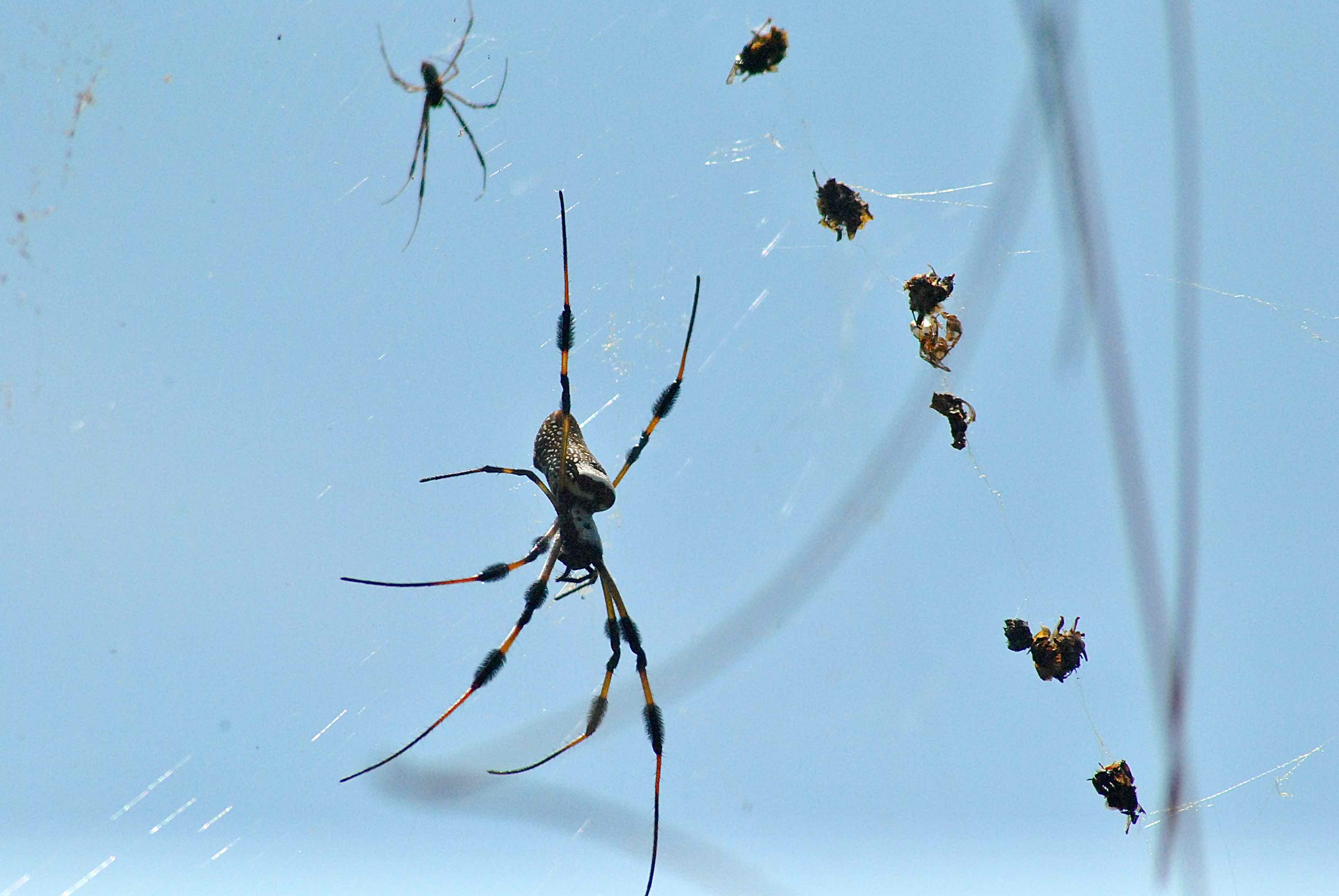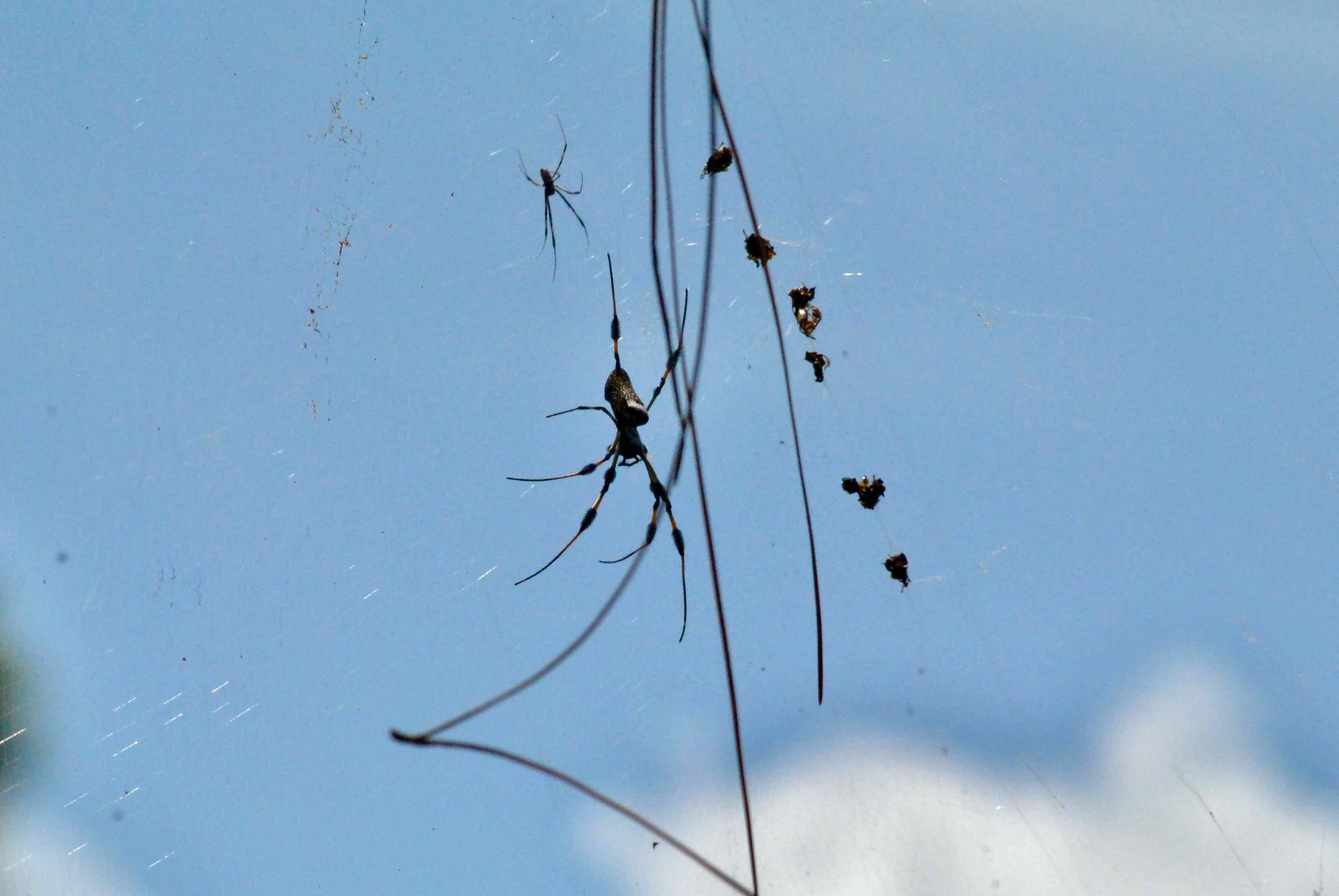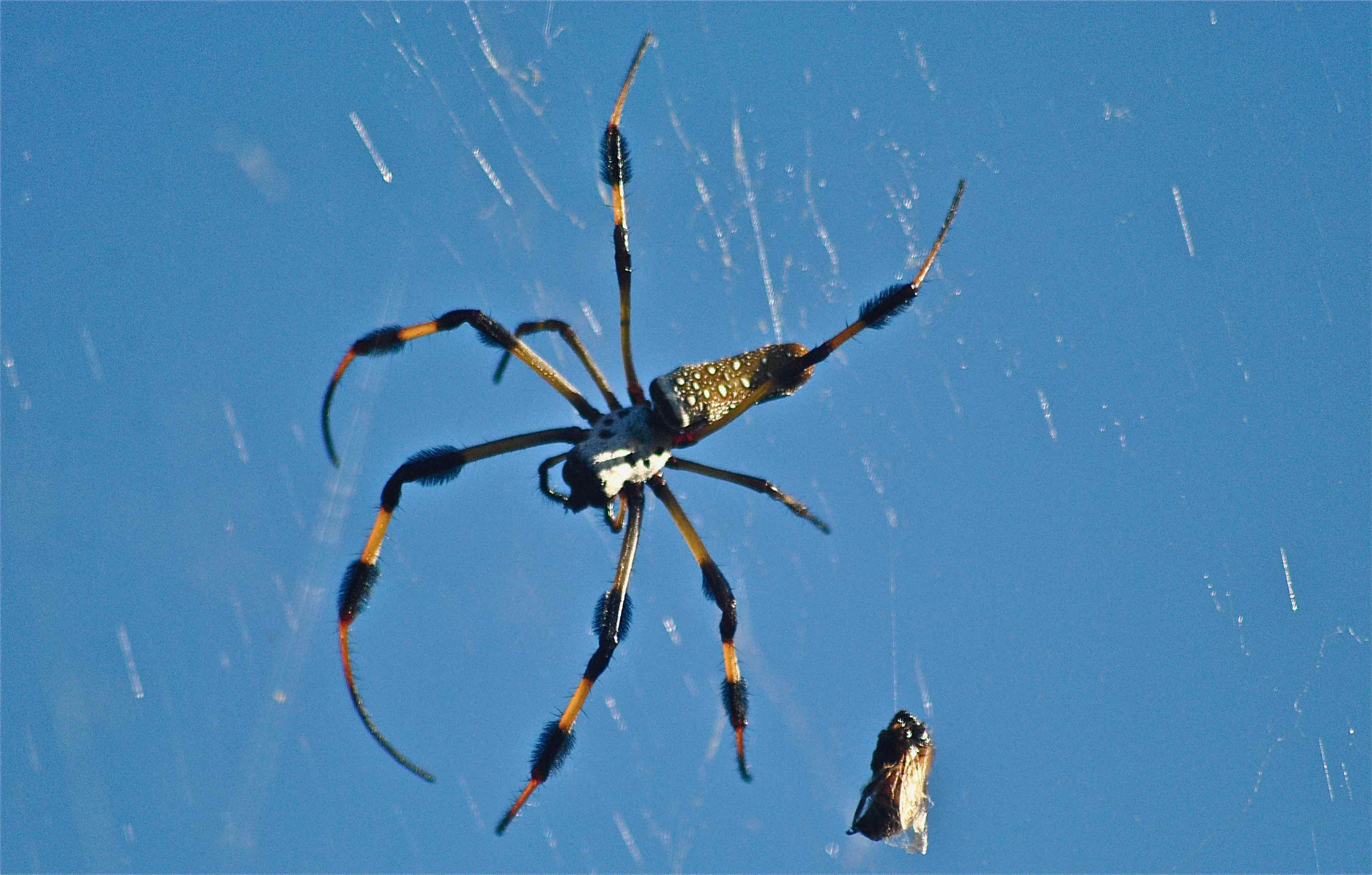
Banana spider, photographed at Blazing Star Preserve, Boca Raton, Palm Beach County, in July 2015.
Itsy bitsy spider? Not this guy. Or to be accurate, not this girl. This spider, the banana spider, aka golden silk orb weaver, aka Trichonephila clavipes, is huge.
Its body can span as much as two inches; with its legs, it can be as long as four inches. It is, in fact, the second largest spider in North America. Only tarantulas are larger. But it's the females of the species that attain the size; males, often seen in the same web, are tiny by comparison.
It's harmless to humans; flying insects not so much. Mosquitoes, moths, bees, butterflies and even dragonflies get caught up in the webs of these giants.
Banana spiders can be found throughout Florida. Their range extends as far north as North Carolina, west along the Gulf Coast to Texas, south through Mexico, Central America and South America to Argentina. Other members of the Nephila genus, some even bigger than the banana, can be found in the Pacific, Southeast Asia and parts of Africa. The banana is the only member of the genus found in the Western Hemisphere.
Banana spiders spin a yellow web that can span huge distances. They're engineering feats, really. In late summer and fall, they almost fill the sky (see photo below), in places, with webs tacked between trees. The center of the web is near the top; the female sits there waiting for a future meal to entangle itself.
Banana spiders will wrap up the victim and move it to the center, probably to guard it against small, "kleptoparasitic" spiders who make their living by stealing food.
Their lifespan is about a year, with females laying eggs in the fall that hatch in the spring. Adult males are present July through September; females develop into adults by July and August.
Their webs are sticky and can be a nuisance to anyone hiking or biking through woods unaware. We're fans of the TV show Naked and Afraid, and every once in a while the narrator will make reference to "toxic banana spiders," as one of the deadly threats the show's participating survivalists face. But banana spiders only bite if held or pinched, and even when they do, the damage they inflict is minimal to humans, and quickly goes away, according to the University of Florida. Admittedly, we wouldn't want to get caught up with one, but on the other hand, they probably wouldn't want to get caught up with us, either.
Tests have shown the silk that banana spiders spin to be stronger than Kevlar and has a greater tensile strength than steel. It's used in surgery to repair or replace nerves because it is antibacterial and the body won't reject it.
Fun fact: Banana spiders are dinosaurs, so to speak. Nephila is the oldest surviving spider genus, dating back 165 million years. Fun fact No. 2: Two banana spiders named Esmeralda and Gladys were on board the International Space Station as part of an experiment to see how spiders spin their webs and catch prey in microgravity. Gladys, however, was discovered to be a male and had his name changed to Gladstone. Esmerelda died during the experiment.
Banana spiders were once classified as members of Tetragnathidae, the family of long-jawed spiders. Now, they are considered members of Nephilidae along with all other members of their genus. Until 2018, banana spiders were known under the scientific name Nephila clavipes but along with 11 other members of Nephila placed in the genus Trichonephila. The World Spider Catalogue, which maintains a list of accepted spider scientific names, rejected eleven of the changes, but kept our guy under its new name. Other common names include: calico spider, giant wood spider and writing spider.

